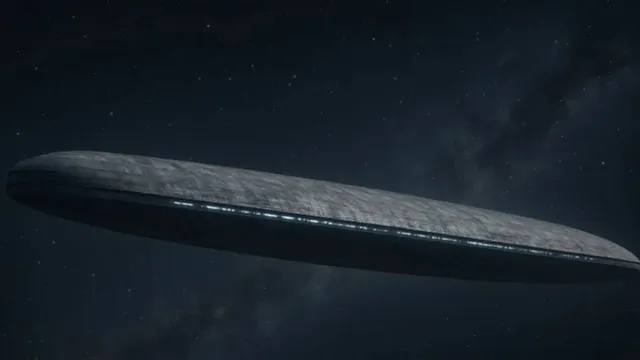- By Shivangi Sharma
- Mon, 10 Nov 2025 03:05 PM (IST)
- Source:JND
The interstellar traveler known as comet 3I/ATLAS has once again captured scientific attention, not only for its striking green glow, but also for what appears to be a missing tail. After briefly vanishing from sight while passing behind the Sun, the object has re-emerged, prompting fresh observations and renewed curiosity. Despite viral speculation, experts insist there is nothing mysterious, or alien, behind its unusual behavior.
On November 5, researcher Qicheng Zhang of Lowell Observatory in Arizona captured new telescope images as 3I/ATLAS moved away from the Sun into a clearer view from Earth. Initially, astronomers expected to see a trail of illuminated dust drifting behind the comet. Images from the R. Naves Observatory in Spain, however, revealed no clear debris plume.
Harvard astrophysicist Avi Loeb noted that roughly 13 per cent of the comet’s nucleus should normally fragment into tail-forming material after perihelion, the closest approach to the Sun. However, he emphasised that camera angle and solar glare may simply be masking the expected dust.
BREAKING: Interstellar visitor 3I/ATLAS just got even more mysterious
— Science Feed (@Science_Feed_) November 9, 2025
New images from Nov 8 reveal at least 7 distinct jets erupting from the comet - including bizarre "anti-tails" pointing TOWARD the sun ☀️
Just days earlier (Nov 5), Lowell Discovery Telescope captured it as a… pic.twitter.com/jTiB92n6AL
Visible Through Amateur Telescopes
Zhang confirmed that the comet is detectable through amateur telescopes across much of the Northern Hemisphere. “It won’t look very impressive,” he told Live Science, “just a smudge, but an increasingly visible smudge over the next few days.”
Discovered in July, 3I/ATLAS is only the third interstellar object ever detected in our solar system. It is racing through space at over 210,000 km/h (130,000 mph) along a remarkably flat trajectory.
ALSO READ: Indian Father-Daughter Missing In Nepal For Weeks Found Dead Near Remote Monastery In Manang
Why It Went Missing From View
The comet briefly disappeared from ground-based view after slingshotting around the Sun, reaching perihelion on October 29 and passing within 210 million kilometers of the star. During this period, many observers lost track of the comet due to solar interference. Images from spaceborne telescopes show that the object remained intact and stable, contradicting early fears of disintegration.
Where Is the Tail?
According to Loeb, the comet was photographed at an angle only 10 degrees away from the Sun, a position that can hide its tail from Earth’s perspective. Zhang added that the dust plume could be pointing directly away from Earth, making it appear invisible, similar to staring down the length of a flashlight beam rather than seeing it from the side.
As 3I/ATLAS continues its outbound journey toward Jupiter, where it will pass closely on March 16, 2026, view angles will widen, allowing clearer images. Astronomers say absolutely not. The comet’s vanishing act was simply orbital geometry, not extraterrestrial interference.

